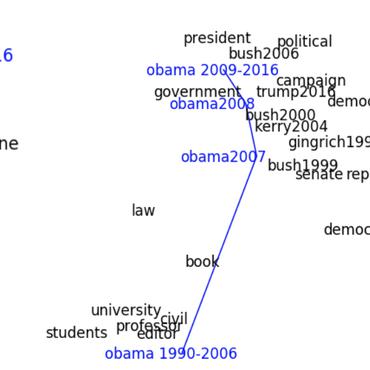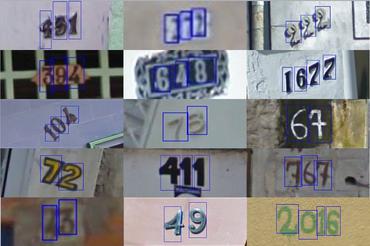Search Results for author: David Bamman
Found 34 papers, 22 papers with code
Narrative Theory for Computational Narrative Understanding
no code implementations • EMNLP 2021 • Andrew Piper, Richard Jean So, David Bamman
Over the past decade, the field of natural language processing has developed a wide array of computational methods for reasoning about narrative, including summarization, commonsense inference, and event detection.
Gender and Representation Bias in GPT-3 Generated Stories
1 code implementation • NAACL (NUSE) 2021 • Li Lucy, David Bamman
Using topic modeling and lexicon-based word similarity, we find that stories generated by GPT-3 exhibit many known gender stereotypes.
AboutMe: Using Self-Descriptions in Webpages to Document the Effects of English Pretraining Data Filters
1 code implementation • 12 Jan 2024 • Li Lucy, Suchin Gururangan, Luca Soldaini, Emma Strubell, David Bamman, Lauren Klein, Jesse Dodge
Large language models' (LLMs) abilities are drawn from their pretraining data, and model development begins with data curation.
Social Meme-ing: Measuring Linguistic Variation in Memes
1 code implementation • 15 Nov 2023 • Naitian Zhou, David Jurgens, David Bamman
Much work in the space of NLP has used computational methods to explore sociolinguistic variation in text.
Grounding Characters and Places in Narrative Texts
1 code implementation • 27 May 2023 • Sandeep Soni, Amanpreet Sihra, Elizabeth F. Evans, Matthew Wilkens, David Bamman
Tracking characters and locations throughout a story can help improve the understanding of its plot structure.
Dramatic Conversation Disentanglement
1 code implementation • 26 May 2023 • Kent K. Chang, Danica Chen, David Bamman
We present a new dataset for studying conversation disentanglement in movies and TV series.
Speak, Memory: An Archaeology of Books Known to ChatGPT/GPT-4
1 code implementation • 28 Apr 2023 • Kent K. Chang, Mackenzie Cramer, Sandeep Soni, David Bamman
In this work, we carry out a data archaeology to infer books that are known to ChatGPT and GPT-4 using a name cloze membership inference query.
Words as Gatekeepers: Measuring Discipline-specific Terms and Meanings in Scholarly Publications
1 code implementation • 19 Dec 2022 • Li Lucy, Jesse Dodge, David Bamman, Katherine A. Keith
Scholarly text is often laden with jargon, or specialized language that can facilitate efficient in-group communication within fields but hinder understanding for out-groups.
Predicting Long-Term Citations from Short-Term Linguistic Influence
1 code implementation • 24 Oct 2022 • Sandeep Soni, David Bamman, Jacob Eisenstein
A standard measure of the influence of a research paper is the number of times it is cited.
Discovering Differences in the Representation of People using Contextualized Semantic Axes
1 code implementation • 21 Oct 2022 • Li Lucy, Divya Tadimeti, David Bamman
A common paradigm for identifying semantic differences across social and temporal contexts is the use of static word embeddings and their distances.
Characterizing English Variation across Social Media Communities with BERT
1 code implementation • 12 Feb 2021 • Li Lucy, David Bamman
Much previous work characterizing language variation across Internet social groups has focused on the types of words used by these groups.
Attending to Long-Distance Document Context for Sequence Labeling
1 code implementation • Findings of the Association for Computational Linguistics 2020 • Matthew J{\"o}rke, Jon Gillick, Matthew Sims, David Bamman
We present in this work a method for incorporating global context in long documents when making local decisions in sequence labeling problems like NER.
Latin BERT: A Contextual Language Model for Classical Philology
1 code implementation • 21 Sep 2020 • David Bamman, Patrick J. Burns
We present Latin BERT, a contextual language model for the Latin language, trained on 642. 7 million words from a variety of sources spanning the Classical era to the 21st century.
Measuring Information Propagation in Literary Social Networks
3 code implementations • EMNLP 2020 • Matthew Sims, David Bamman
We present the task of modeling information propagation in literature, in which we seek to identify pieces of information passing from character A to character B to character C, only given a description of their activity in text.
Breaking Speech Recognizers to Imagine Lyrics
1 code implementation • 15 Dec 2019 • Jon Gillick, David Bamman
We introduce a new method for generating text, and in particular song lyrics, based on the speech-like acoustic qualities of a given audio file.
An Annotated Dataset of Coreference in English Literature
3 code implementations • LREC 2020 • David Bamman, Olivia Lewke, Anya Mansoor
We present in this work a new dataset of coreference annotations for works of literature in English, covering 29, 103 mentions in 210, 532 tokens from 100 works of fiction.
Literary Event Detection
2 code implementations • ACL 2019 • Matthew Sims, Jong Ho Park, David Bamman
In this work we present a new dataset of literary events{---}events that are depicted as taking place within the imagined space of a novel.
An annotated dataset of literary entities
2 code implementations • NAACL 2019 • David Bamman, Sejal Popat, Sheng Shen
We present a new dataset comprised of 210, 532 tokens evenly drawn from 100 different English-language literary texts annotated for ACE entity categories (person, location, geo-political entity, facility, organization, and vehicle).
Learning to Groove with Inverse Sequence Transformations
1 code implementation • 14 May 2019 • Jon Gillick, Adam Roberts, Jesse Engel, Douglas Eck, David Bamman
We explore models for translating abstract musical ideas (scores, rhythms) into expressive performances using Seq2Seq and recurrent Variational Information Bottleneck (VIB) models.
Please Clap: Modeling Applause in Campaign Speeches
no code implementations • NAACL 2018 • Jon Gillick, David Bamman
This work examines the rhetorical techniques that speakers employ during political campaigns.
Telling Stories with Soundtracks: An Empirical Analysis of Music in Film
no code implementations • WS 2018 • Jon Gillick, David Bamman
Soundtracks play an important role in carrying the story of a film.
The Labeled Segmentation of Printed Books
no code implementations • EMNLP 2017 • Lara McConnaughey, Jennifer Dai, David Bamman
We introduce the task of book structure labeling: segmenting and assigning a fixed category (such as Table of Contents, Preface, Index) to the document structure of printed books.
Adversarial Training for Relation Extraction
no code implementations • EMNLP 2017 • Yi Wu, David Bamman, Stuart Russell
Adversarial training is a mean of regularizing classification algorithms by generating adversarial noise to the training data.
Annotating Character Relationships in Literary Texts
no code implementations • 2 Dec 2015 • Philip Massey, Patrick Xia, David Bamman, Noah A. Smith
We present a dataset of manually annotated relationships between characters in literary texts, in order to support the training and evaluation of automatic methods for relation type prediction in this domain (Makazhanov et al., 2014; Kokkinakis, 2013) and the broader computational analysis of literary character (Elson et al., 2010; Bamman et al., 2014; Vala et al., 2015; Flekova and Gurevych, 2015).
Unsupervised Discovery of Biographical Structure from Text
no code implementations • TACL 2014 • David Bamman, Noah A. Smith
We present a method for discovering abstract event classes in biographies, based on a probabilistic latent-variable model.
A framework for (under)specifying dependency syntax without overloading annotators
1 code implementation • WS 2013 • Nathan Schneider, Brendan O'Connor, Naomi Saphra, David Bamman, Manaal Faruqui, Noah A. Smith, Chris Dyer, Jason Baldridge
We introduce a framework for lightweight dependency syntax annotation.
New Alignment Methods for Discriminative Book Summarization
no code implementations • 6 May 2013 • David Bamman, Noah A. Smith
We consider the unsupervised alignment of the full text of a book with a human-written summary.
Gender identity and lexical variation in social media
1 code implementation • 16 Oct 2012 • David Bamman, Jacob Eisenstein, Tyler Schnoebelen
Examining individuals whose language does not match the classifier's model for their gender, we find that they have social networks that include significantly fewer same-gender social connections and that, in general, social network homophily is correlated with the use of same-gender language markers.











